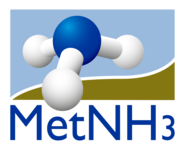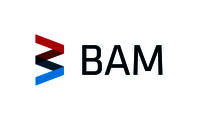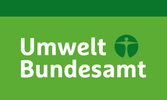The MetNH3 Consortium
| JRP Partner | Name of Institution | Country | Weblink |
|---|---|---|---|
| 1 METAS | Federal Institute of Metrology | Switzerland | METAS |
| 2 BAM | Federal Institute for Materials Research and Testing | Germany | BAM |
| 3 DFM | National Metrology Institute | Denmark | DFM |
| 4 MIKES | Centre for Metrology and Accreditation | Finland | MIKES |
| 5 NPL | National Physical Laboratory | United Kingdom | NPL-CM / NPL-EM |
| 6 PTB | National Institute for Science and Technology | Germany | PTB |
| 7 UBA | Federal Environment Agency | Germany | UBA |
| 8 VSL | National Metrology Institute | The Netherlands | VSL |
METAS, the Swiss Federal Institute of Metrology is part of the Federal Departement of Justice and Police (EJPD). It realises and disseminates internationally harmonised and recognised measurement standards at the required accuracy.
The gas analysis laboratory within the Analytical Chemistry Section provides services in the area of gaseous airborne pollutants and is expertly carrying out accurate measurements for gas mixtures with special emphasis on their dynamic generation based on magnetic suspension balances at very low uncertainty (CCQM-K46, CCQM-K47). Furthermore, METAS is accurately calibrating gas flow as proven in the framework of EURAMET and CCQM projects and key comparisons.
For those reasons, METAS will contribute to WP1 activities with the generation of dynamic gas mixture standards for ammonia at molar fractions below 200 nmol/mol combining its experience of permeation and dilution methods with highest purity matrix gases for a very low molar fraction range.
METAS is responsible for the coordination of the JRP MetNH3.
The Federal Institute for Materials Research and Testing BAM is a scientific and technical institution under the authority of Germany's Federal Ministry for Economic Affairs and Energy. BAM’s key tasks are covered by the guideline: Safety in technology and chemistry. We ensure the ongoing of our guideline by pursuing our mission through: 1) research and development, 2) testing, analysis, approval and certification and 3) consultation, information and advice.
The area of expertise “Chemical Sensor Technology; Impedance measurement; Sol-Gel-Methods” belongs to BAM-division 6.4 Nanomaterial Technologies and is concerned with research, testing and consulting for manufacturing of nanostructured functional coatings as well as their properties and applications. Test methods are developed within the framework of standards bodies and tests performed using accredited procedures and validated reference methods.
BAM will contribute to this JRP by the development of a test gas generation facility for a precise dynamic generation of ammonia in the molar fraction range of 0.5 nmol/mol to 500 nmol/mol by permeation method; the setting up a gas flow design to install this device as an on-site calibration unit of laser spectrometers and the validation of this method including the uncertainty budget for the test gas generation.
DFM is the Danish National Metrology Institute. DFM has been active in the development of laser spectroscopic methods for monitoring purposes during the past 18 years and more recently has used them as a primary reference method. To this end fundamental ro-vibrational bands have been monitored by the laser difference frequency technique, which generate radiation in the mid-infrared region, and by a tuneable homebuilt single mode, narrow line width (1 MHz) tuneable OPO system (3.2 – 3.7 μm and 2.7 μm region), as well as by tuneable telecom lasers (1.3 μm – 1.6 μm region), applied in single pass, multi pass and CRDS absorption cells. DFM has experience with high resolution spectroscopy of ammonia as well as microwave optical double resonance spectroscopy in hollow-core fibres.
DFM will contribute to WP2 with necessary spectroscopic features of ammonia, for the selection of wavelength region and the designing of the optical spectrometers for the extractive optical transfer standard and sampling free optical technique. The primary contribution will be on the traceability of the spectroscopic ammonia measurement, in particular the spectral fitting. DFM has recently made considerable impact on line shape modelling and will extend this modelling to include necessary new approaches required in this JRP.
The Centre for Metrology and Accreditation (MIKES) is a national metrology institute designated to develop and maintain the SI-system in Finland. Laboratories of MIKES, or those nominated by MIKES, realise the base units of the SI-system and guarantee accuracy of measurements for the scientific community, industry, and trade. In addition, MIKES carries out scientific research on fundamental metrology to improve the realisation of the units and the accuracy of measurements. In Finland, MIKES is the National Metrology Institute for length, electrical quantities, time and frequency, mass, temperature, and pressure.
MIKES has a history of making length measurements at the highest international level. As a part of this work, considerable effort has been directed towards accurate determination of the refractive index of air. Recently, considerable progress in the measurement of the average temperature and humidity of air was achieved within the iMERA-Plus JRP T3.J3.1 Long distance, where a spectroscopic thermometer and hygrometer were successfully developed. Extensive experience in developing spectroscopic applications using diode lasers will be brought into the JRP. In addition, much of the work will rely on prior experience at MIKES in the engineering of sophisticated electrical and optical devices. MIKES will contribute to WP2 and WP3 in the JRP.
NPL is the UK’s National Measurement Institute and develops and maintains the nation’s primary measurement standards, supporting an infrastructure of traceable measurement throughout the UK and the world, to ensure accuracy and consistency.
The research in this JRP by NPL will be delivered by the Gas and Particle Metrology Group and the Environmental Measurement Group. The gas section of the first group consists of 15 scientists devoted to the development and dissemination of standards for gas and trace analysis. It has been particularly focussed on the standards required for atmospheric and air quality monitoring. NPL disseminates a full suite of standard gas mixtures to support the EU Air Quality Directives. These are based on a combination of standards prepared by gravimetric dilution and dynamic dilution methods. NPL’s research in this JRP will build on the development of standards of ammonia at ambient levels, including both static and dynamic standards (WP1). The role of the Environmental Measurement Group in the JRP is focused on WP3 and will include the development of test chamber facilities capable of supporting suitable traceable atmospheres of ammonia. The facility will be used to carry out exposure tests with diffusive samplers and denuders. NPL will also assess a CRDS system as a potential and robust optical reference instrument, and assist REG(NERC) in implementing the field applicable methods.
The Physikalisch-Technische Bundesanstalt (PTB) is the national metrology institute and the highest technical authority of the Federal Republic of Germany for the field of metrology and certain sectors of safety engineering. With respect to gas analysis, this network is the framework for a close collaboration with the Federal Agency for Environmental Protection (UBA) and the Federal Institute for Materials Research and (BAM).
The working group on Metrology in Molecular Spectroscopy in PTB consists of a group of researchers coming from the metrology-in-chemistry area and the academic laser spectrocopy community. One focus of the work is the development of laser based spectrometers using near-infrared tuneable diode lasers and mid-infrared quantum cascade lasers.The spectrometers are capable of absolute, calibration-free measurements based on the "traceable infrared laser-spectrometric amount fraction measurement" (TILSAM) method. The targeted analytes are, among others H2O, CO2, CH4, CO and NH3. The working group is also active in spectral molecular line parameter measurements based on a high resolution Fourier-Transform Infrared (FTIR) spectrometer, as well as laser spectroscopy. Both methods have the potential to provide traceable line strengths and pressure broadening coefficients with an uncertainty below a few percent. The working group has participated in a number of EMRP projects, including EUMETRISPEC (Spectral reference data for atmospheric monitoring), MACPoll (Metrology of Chemical Pollutants in Air), METEOMET (Metrology for Meteorology), GAS (Characterisation of Energy Gases) and MetAMC (Metrology for airborne molecular contamination in manufacturing environments).
PTB’s activity shall be focused on WP2, aiming at the de velopment of an optical transfer standard for ambient ammonia measurements based on a state-of-the-art spectroscopic measurement technique. The developed optical transfer standard will also be used in WP3 in inter-comparison measurements, as well as for the validation of conventional measurements systems.
The Federal Environment Agency (UBA) is a Designated Institute in Germany responsible for regulated gaseous air pollutants in ambient air. UBA comes under the auspices of the Federal Ministry of Environment.
UBA meets the requirements for calibration and testing laboratories as defined in EN ISO/IEC 17025 and has about 1300 employees. UBA’s activities will focus on WP3. The main contribution is dealing with the operation of an installation for proficiency tests to be validated for ammonia concentration down to ambient levels and to provide traceable complex test matrix gases to participants of intercomparison exercises to achieve traceability of measurement methods applied in the field, an area the technical staff has gained exhaustive experience of in the past.
Technical experts of UBA are members of working groups of VDI, DIN CEN TC 264 (Air Quality). The main topics are: Reference measuring methods, quality assurance, testing of new instruments. This is done with the aim to support measurements sites to achieve the data quality objectives of directive 2008/50/EU.
UBA is member of the gas working group of CCQM at the BIPM. It takes part in international key comparisons on highest metrological level. UBA is also member of AQUILA, the network of European Reference Laboratories. It takes part in round robin tests at the European laboratory ERLAP.
VSL is the National Metrology Institute of the Netherlands and participates in this JRP with its chemistry group (gas analysis). The chemistry group of VSL has more than 30 years of experience in the preparation and certification of gas mixtures, including those for air quality applications. The accuracy of gravimetrically prepared mixtures and the analytical capabilities of VSL are state-of-the-art and have been demonstrated in many international comparisons.
The chemistry group has a track record in the supply of reference gas mixtures for a wide range of compounds in a broad composition range, including challenging mixtures with reactive and adsorbing gas components, such as NO, NO2, HCl, H2O, H2S and NH3. The group has many years of experience in using different cylinder passivation techniques for different compounds, and performing long term stability studies for the gaseous reference materials. VSL has a wide variety of state-of-the-art analytical equipment for analysis of all kind of air quality related gaseous compounds. Over the last 5 years the group has invested strongly in novel laser-based spectroscopic techniques capable of analysing a range of compounds with nmol/mol sensitivity.
VSL will contribute to WP1 with the development of NH3 gas standards at ambient level. Research will focus on quantification of adorption/desorption effects in the preparation of gas mixtures.









